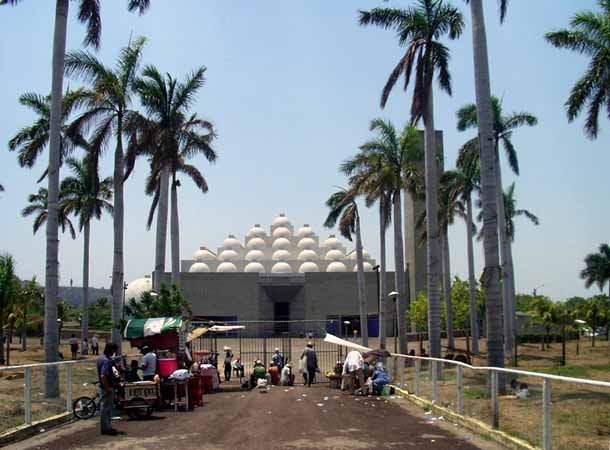
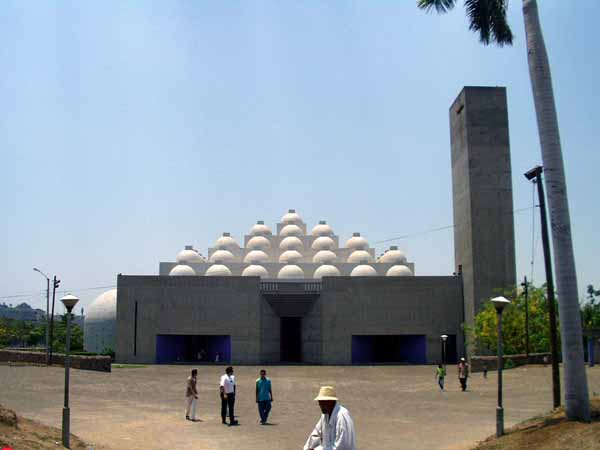
I arrived in Managua on Wednesday, April 30, coming from Leon. I wanted to find a guide to take me to Vulcan Momotombo, a very active cone volcano. What I did not know was that in Nicaragua May Day is a big deal, and May 1 was the start of a five day weekend during which most businesses shut down. Apparently the tour group recommended in my guidebook had gone out of business, the tourist offices in Managua were closed, and I couldn't find any information about guides on the internet. So I walked around the city, wrote and mailed some postcards, and made plans for Honduras.
Managua is not a city of great interest for tourists, but I did the best I could. I was amused by the contrast between the cities new cathedral, shown in the first two pictures below, and the old cathedral shown in the following pictures. The old cathedral is actually fairly new; it was built in 1929, damaged along with most of the colonial center in an earthquake in 1931, repaired then damaged in another earthquake in 1972. The zoom pictures of the cathedral show some of the damage. After the 1972 quake and assurances from geologists that more would come the cathedral and most of the old center were abandoned. The old part of town is now mostly parks, monuments and abandoned buildings. It's the most interesting part of the city.


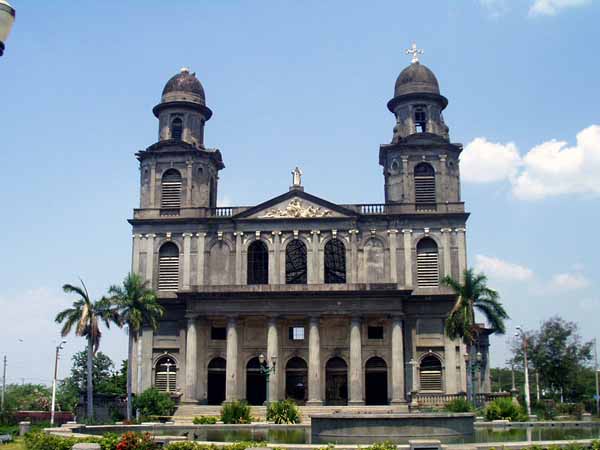
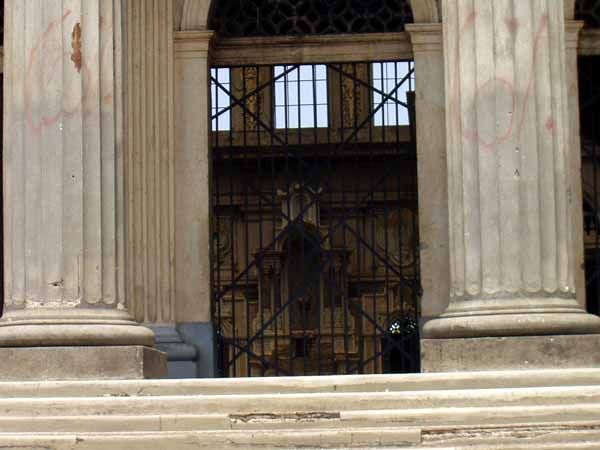
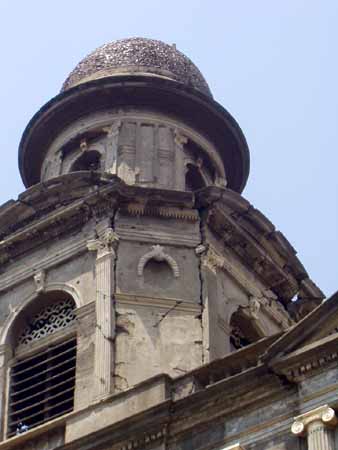
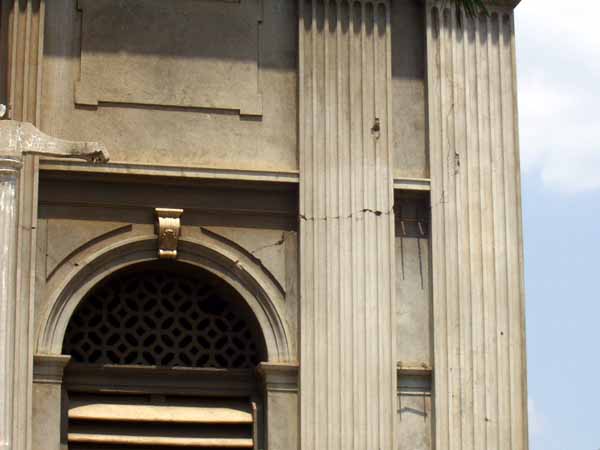
Also in the old center is the Estatua al Soldado; the inscription reads "Solo los obreros y campesinos iran hasta el fin". Roughly translated; "Only the workers and country people (farm workers) will go to the end". That's my word for word translation, which is the best I can do. My guidebook translated it as "Workers and campesinos onward to the end". That's probably closer to the spirit of the inscription. Anyone with a better grasp of Spanish is free to correct me here:
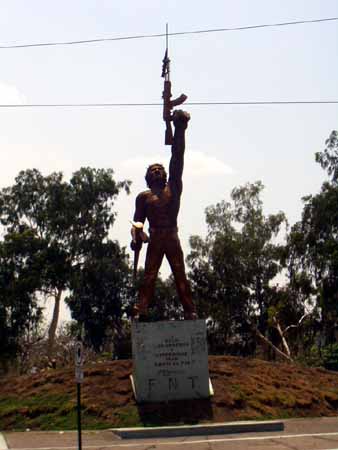
A monument in the center I thought was much more inspirational for Nicaragua's future is the Parque de la Paz. In it some of the weapons from the 1980's conflict are buried in concrete:
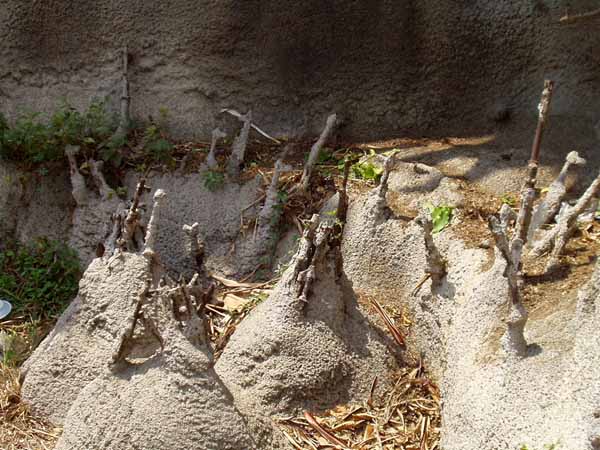
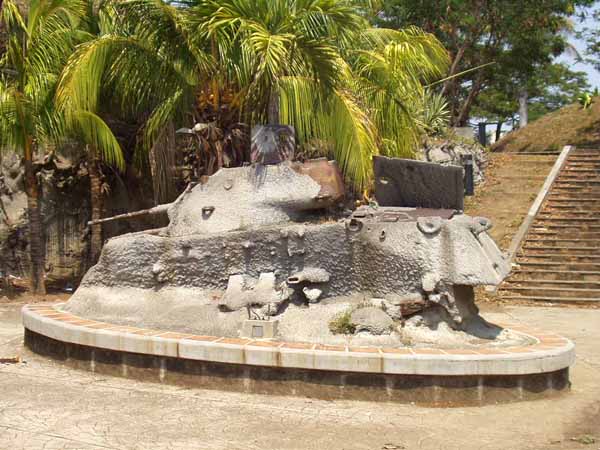
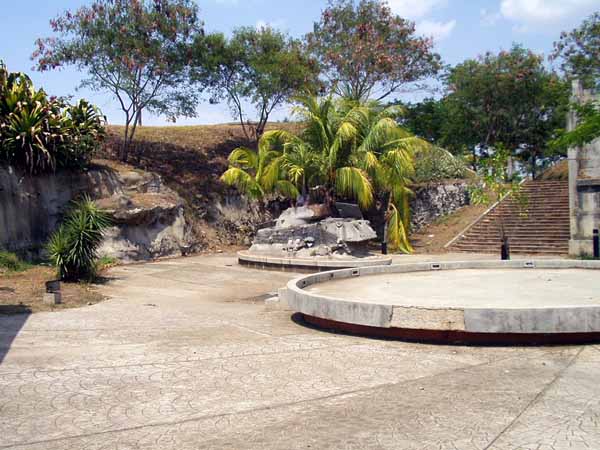
I arrived in Managua on Wednesday afternoon and left Sunday morning. I decided that even if I could find a guide for Momotombo on Monday, which didn't look likely, and if I could arrange a trek for Tuesday, it would still be Wednesday at the earliest before I left Managua, and that was more time than the city deserved. The guidebook and information from the internet advised caution in Managua to the point of making me paranoid. I did go out on Thursday night to check out an Irish pub I had stumbled across while looking for a tourist office. I took a taxi to the pub, ate and had a few beers, then asked the manager if he could call a taxi so I could return. He pointed me to a nearby street and told me if I walked along it for a few blocks I would find a major street where I could easily catch a cab. He assured me it was safe to walk along this street alone at night, so, not wishing to appear like a wimp, I started walking. It was more than a few blocks; I walked between a half mile and a mile through an upscale residential area. It was easy to see why the walk was safe; on every block of the street was at least one, and usually two or three guards with revolvers and/or shotguns. They could see I was not the kind of person they were guarding against so we would exchange Buenos noches and, when I asked directions, they assured me I was heading in the correct direction. So it was a safe walk, and I did find a cab and return to my room in good shape, but it did not reassure me about the safety of Managua. The homeowners must have gone to considerable expense hiring these guards.
That was my weekend in Managua. On May 4 I left Nicaragua for Honduras.